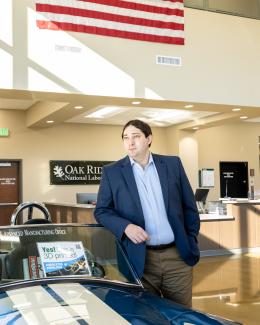Abstract
Correlation between spot-melt scan parameters (linear spot-density aka areal energy density), build geometry, and solidification microstructure evolution (columnar vs equiaxed) in a powder bed fusion technology is investigated. It is shown that to maintain the equiaxed solidification microstructure evolution in electron beam powder bed additive manufacturing (AM), the areal energy density per layer needs to be scaled with respect to the 2D cross-sectional area of the layer being melted. Samples with two different cross-sectional areas (40 × 40 mm and 20 × 20 mm) have been fabricated with varying areal energy densities. For a given square cross-section (20 × 20 mm), increasing the areal energy density (4.8 MJ/sq.m to 14.7 MJ/sq.m) transitioned the solidification microstructure from columnar to equiaxed. The observed microstructure data (Electron Back Scattered Diffraction - EBSD) is quantified by calculating the principal component (PC) score using a spatial statistics methodology. The sample with equiaxed grains is found to have a low PC score while the sample with columnar grain had a high PC score. A semi-analytical model is used to simulate the heat transfer and the local solidification conditions as a function of processing parameters (linear spot-density). The result from the heat transfer model is correlated with previously quantified microstructure data. Space-Time analysis of the melt pattern is done and correlated with the observed microstructure. In addition, from the findings, appropriate parameters have been used to additively manufacture a turbine blade with site-specific or hybrid solidification microstructure (traditional fabrication possible via a patented method of localized cold working and heat treatment).




